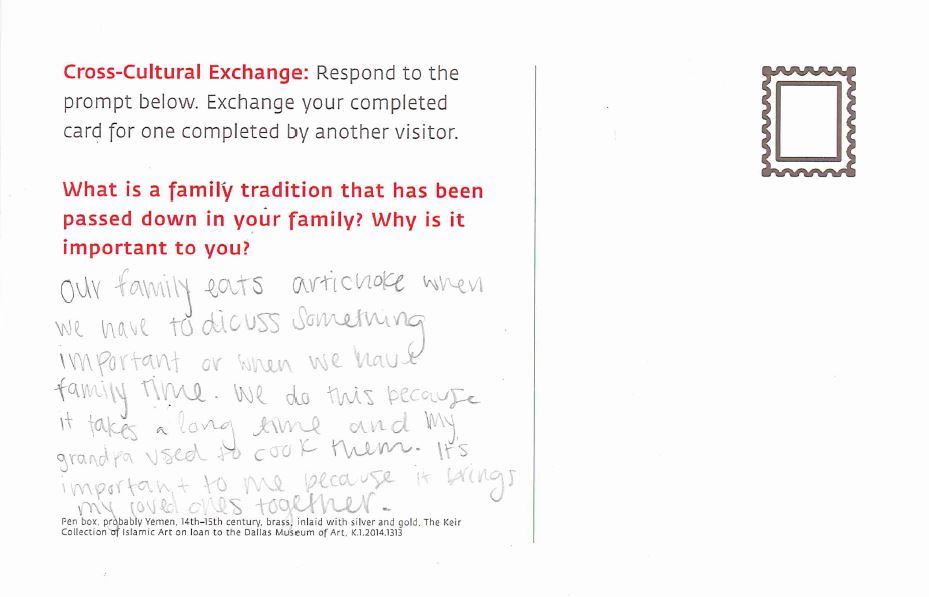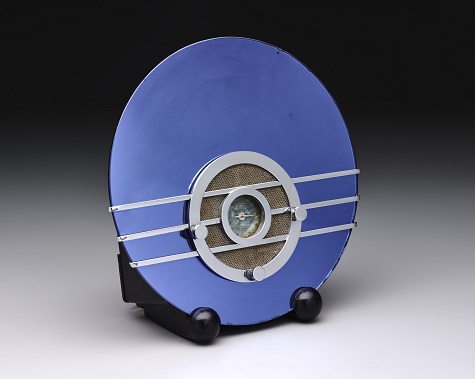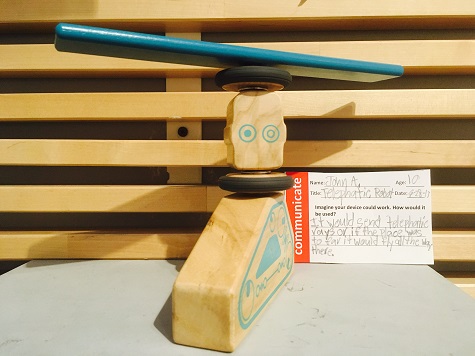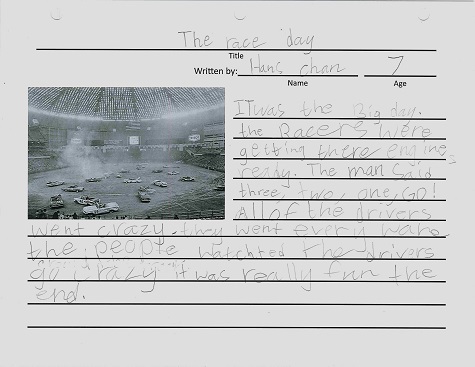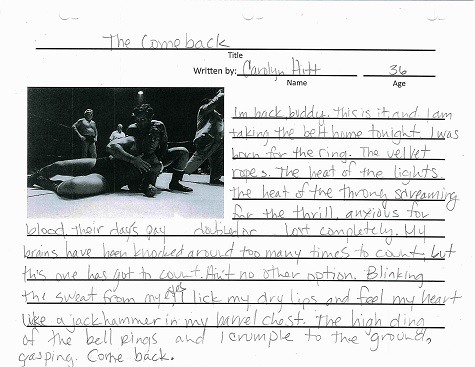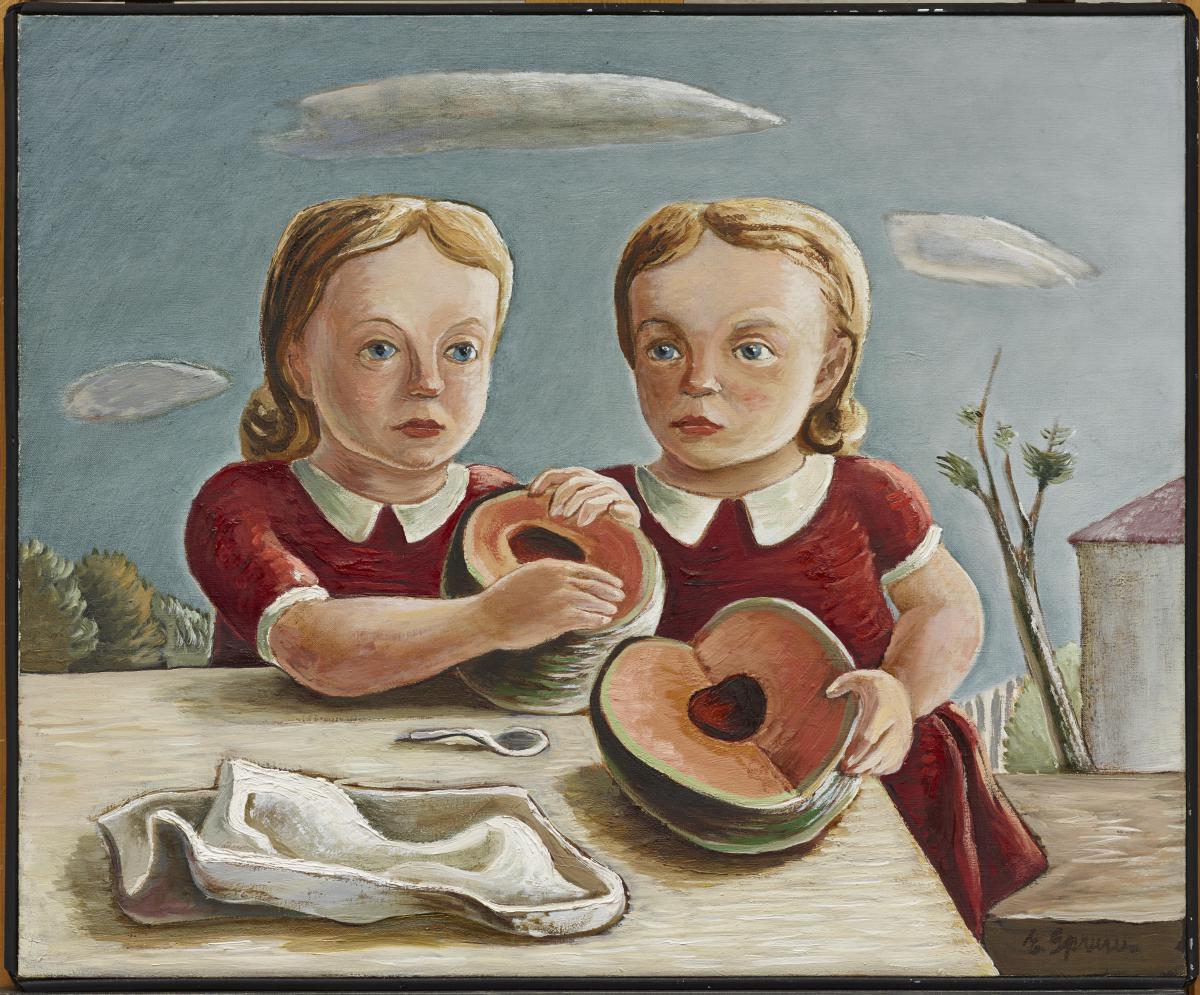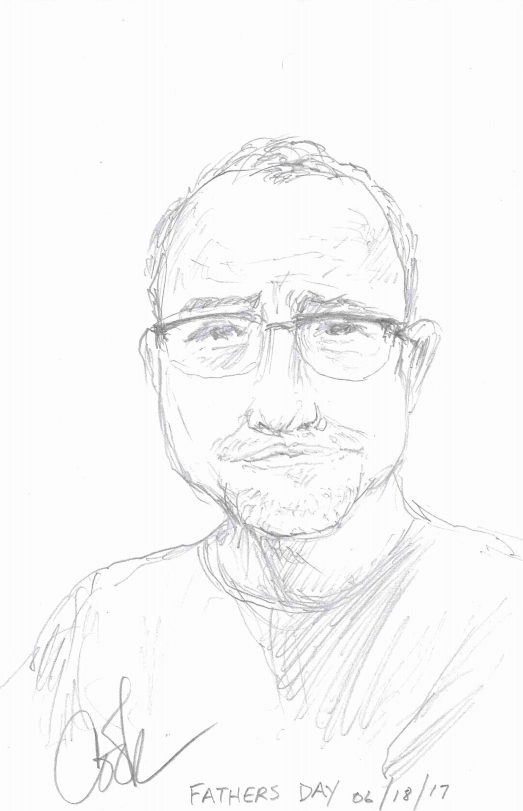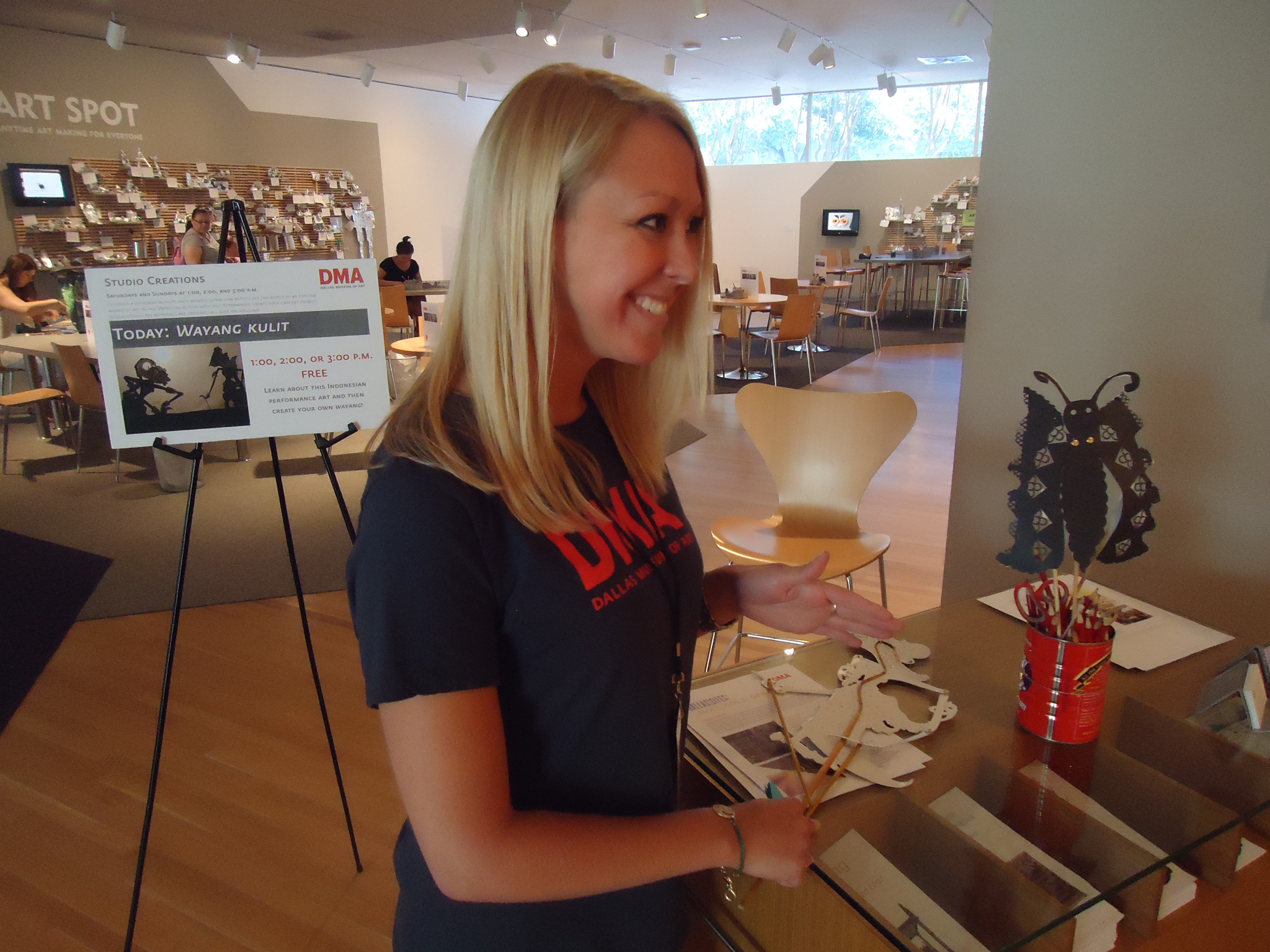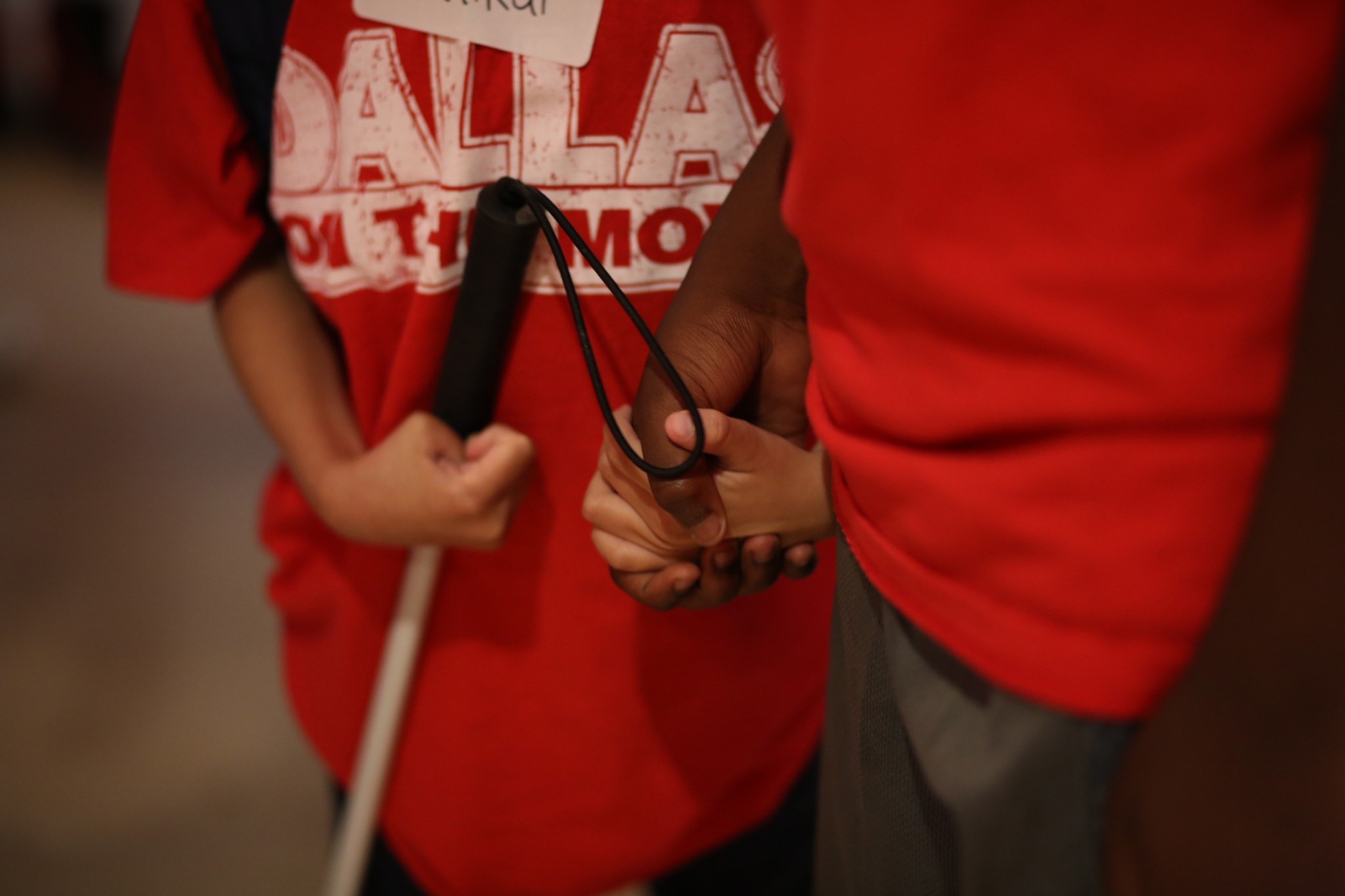
It may or may not surprise you to hear that one in five adults in the United States self-identifies as having a disability. At the DMA, we believe that limitations reside not in individuals, but in systematic barriers to participation, and that accessibility is a shared responsibility across the Museum. Collaboration between departments helps the DMA remove barriers to participation and continually broaden our definition of access.
One of the ways we approach accessibility is through individualized experiences for specific needs. But we also learned from visitors that they’d like the means to explore the Museum and its collection through unstructured, anytime activities and resources.
This month we are pleased to unveil the result of the most recent collaboration between our Education and Design departments: large-print booklets in the Center for Creative Connections Gallery.
When designing for the low-vision community, the proper treatment and application of design elements can significantly enhance readability. Simply enlarging standard-print documents does not result in effective large-print material. The font selection, size, and line spacing are just a few components that must be carefully selected and treated.
Sans serif geometric fonts such as Helvetica, Futura, and Gotham Rounded are ideal for large-print documents. Limiting the number of characters per line, creating a high visual color contrast between the background and text, and aligning to the left are further design decisions that help the low-vision community easily consume printed information.

While visitors with vision impairment were at the forefront of our mind during the design process, these design elements can help remove barriers for visitors with dyslexia and those who are English language learners as well.
We are excited to add these large-print booklets to our repertoire of accessible materials for visitors. Some of our previous projects include visual descriptions and sensory activities at the Pop-Up Art Spot. Creating opportunities and programs for visitors with vision impairments has long been an important facet of the DMA’s program offerings with Art Beyond Sight Awareness month in October and our summer touch tour for DISD students with visual impairments.
While many exciting accessibility projects are underway at the Museum, there is still much work to be done. As we evaluate and test the new large-print label format, we will seek to expand the booklets to other exhibition galleries in the future. We hope the introduction of the large-print label booklets will be a next step in exploring what we can do to better serve our audiences and expand accessibility throughout the Museum.
Emily Wiskera is the Manager of Access Programs and Jaclyn Le is the Exhibitions Graphic Designer at the DMA.





















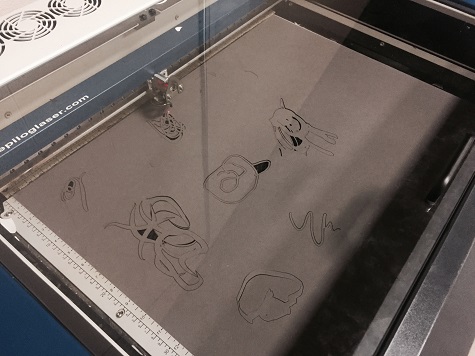


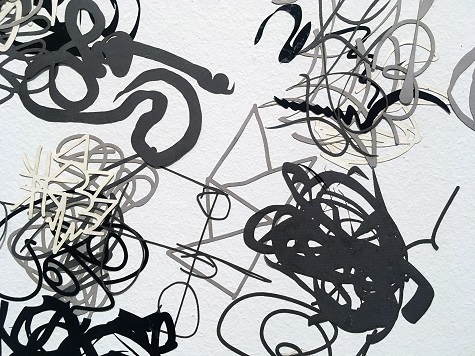

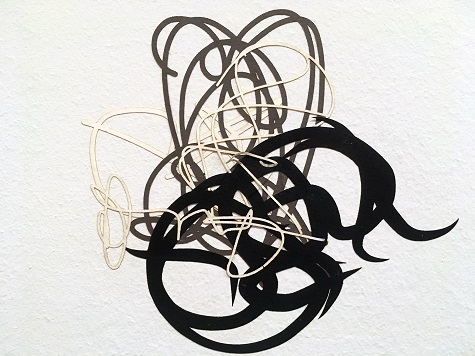







 This summer, I had the chance to intern with the
This summer, I had the chance to intern with the 